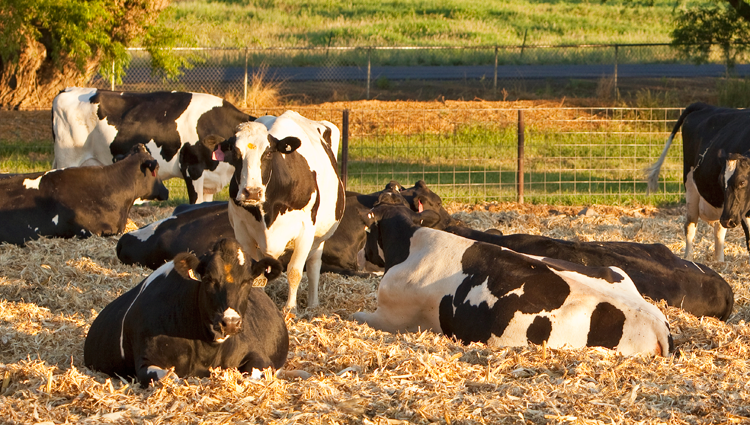Our second stop in the journey of milk from the farm to the table is milk production – the “meat” (or milk) of dairy farming.
There are many moving parts on a dairy, from facility management, to herd health, to feeding dairy cows, to sanitation in the milking parlor, all of which ultimately affect the bottom line – the quantity and quality of milk produced.
Animal welfare is a top priority for dairy farmers, because healthy cows produce high quality milk. For that reason, best management practices are shared among dairy farmers and the dairy community, and the resulting National Dairy Farmers Assuring Responsible Management (FARM) Program – a verifiable animal wellbeing program – has over 98% of the milk supply enrolled.
Dairy cows receive regular veterinary care, such as periodic check-ups, preventative vaccinations and prompt treatment of illness. It is important to note that dairy cows are not routinely treated with antibiotics. Just as you’d only treat a sick child with antibiotics under the supervision of a doctor, dairy farmers care for their cows in a similar manner. When an illness requires that a cow be treated, antibiotics are administered according to strict Food and Drug Administration guidelines, which include withholding that milk from market. When a cow’s milk is withheld, she is given special care and attention separate from the milking herd until her milk tests free of antibiotics.
Every tanker load of milk is strictly tested for antibiotics. In the extremely rare event that milk tests positive, it is disposed of immediately and never reaches the public. Not to mention that the farmer is financially liable if antibiotics are found in their milk.
Dairy cows always have access to clean water, feed and shelter and many dairy farmers use “free-stall housing,” a type of barn that allows cows to move about, eat and sleep at will. In hot climates, dairy farmers ensure cows stay cool and comfortable by utilizing fans and water misters – because, after all, cow wellbeing is of upmost importance as their cows are their livelihood.
Scientific and technological advances, in addition to on-farm sensibilities have allowed for better animal care. More precise farming practices have decreased inputs such as land, water, fuel and feed, and improved efficiencies to produce more with less. What 26 million dairy cows could produce in 1944, 9 million dairy cows can produce today. Another way to say it is that a gallon of milk today is produced with 65% less water, 90% less land and 63% less carbon than a gallon of milk in 1944. That’s sustainability at its finest.
Check out the full series:
- The Art and Science of Dairy from Farm to Table: An Intro
- The Art and Science of Dairy from Farm to Table: Production of Feed and Reducing Waste
- The Art and Science of Dairy from Farm to Table: Milk Production
- The Art and Science of Dairy from Farm to Table: Raw Milk Transport
- The Art and Science of Dairy from Farm to Table: Processing and Packaging
- The Art and Science of Dairy from Farm to Table: Retail and Distribution




